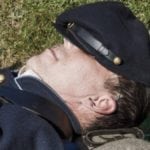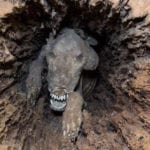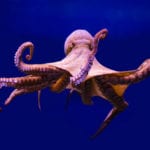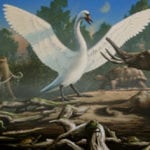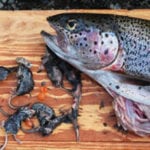 History
History  History
History  Movies and TV
Movies and TV 10 Fictional Kings Who Go from Good to Bad
 Food
Food The Fantastic Chemistry Behind Why 10 Popular Foods Taste So Good
 Technology
Technology 10 Futuristic Fungal Technologies
 History
History 10 Not-so-Spooky Events That Also Happened on October 31
 Creepy
Creepy 10 Unsettling Ghost Stories to Tell This Halloween
 Crime
Crime 10 Truly Evil People Who Used Halloween as the Perfect Cover
 Movies and TV
Movies and TV 10 Wildly Different Movie Takes on Nuclear War
 Creepy
Creepy 10 Places Where Folklore Is Alive and Well
 History
History 10 Events That Unexpectedly Changed American Life
 History
History 10 Weird Distractions from the Great Depression
 Movies and TV
Movies and TV 10 Fictional Kings Who Go from Good to Bad
 Food
Food The Fantastic Chemistry Behind Why 10 Popular Foods Taste So Good
Who's Behind Listverse?

Jamie Frater
Head Editor
Jamie founded Listverse due to an insatiable desire to share fascinating, obscure, and bizarre facts. He has been a guest speaker on numerous national radio and television stations and is a five time published author.
More About Us Technology
Technology 10 Futuristic Fungal Technologies
 History
History 10 Not-so-Spooky Events That Also Happened on October 31
 Creepy
Creepy 10 Unsettling Ghost Stories to Tell This Halloween
 Crime
Crime 10 Truly Evil People Who Used Halloween as the Perfect Cover
 Movies and TV
Movies and TV 10 Wildly Different Movie Takes on Nuclear War
 Creepy
Creepy 10 Places Where Folklore Is Alive and Well
 History
History 10 Events That Unexpectedly Changed American Life
10 Amazing Animals Awarded A Medal For Bravery
During World War II, Maria Dickin, founder of the veterinary charity People’s Dispensary for Sick Animals (PDSA), was so touched by the plight of animals in wartime that she instituted the PDSA Dickin Medal.
The animal equivalent of the Victoria Cross, the bronze medallion acknowledges extraordinary valor and has worldwide recognition as the highest honor that can be given to any animal in military conflict. Exceptional acts of bravery performed on the civil front by police dogs, horses, and guide dogs can also earn the elite medal bearing the words “We Also Serve.”
10 Winkie

On February 23, 1942, a Beaufort bomber and her crew were in serious trouble. While returning from a World War II mission over Norway, enemy fire seriously crippled the aircraft.
Although the men survived both the attack and the crash landing into the ocean, their odds for survival weren’t looking good. The men were somewhere in the freezing North Sea and a long way from the safety of the nearest RAF base.
When they realized that their radio was dead, the desperate crew pinned their hopes on a carrier pigeon named Winkie. The blue chequered hen was released and flew home under incredibly difficult circumstances, covering 200 kilometers (120 mi) across the North Sea.
When her owner found the exhausted bird in her loft in Broughty Ferry, she was full of oil. She also carried no message. This didn’t deter the RAF from launching a rescue mission.
By calculating the time that the plane went down, the wind direction, the time of Winkie’s arrival, and the effect of the oil on her speed, the position of the bomber was discovered. Her crew was rescued within 15 minutes.
Without the dramatic flight of their carrier pigeon, the men most certainly would have died. A year after playing her part in the rescue, Winkie became the first animal to be given the Dickin Medal.
9 Diesel
Perhaps the most tragic Dickin recipient on this list is Diesel, a French police dog. Five days after the 2015 Paris attacks—during which 130 people died—the Belgian shepherd was part of an operation to catch the suspected mastermind behind the massacre.
Police believed him to be hiding in an apartment in a northern suburb of Paris. During the raid, the seven-year-old Diesel was sent in to scout the area.
She cleared the first room. But the moment that she entered the next one, her handler saw her lunge forward as if she had discovered somebody. The dog’s dash drew fire from within the room. Tragically, Diesel was gunned down. She died from multiple gunshot wounds.
Abdelhamid Abaaoud, the suspected terrorist, was also killed during the raid. When news of Diesel’s death spread, she was mourned by many people inside and outside of France. Russia even sent France a puppy, a male German shepherd named Dobrynya. The PDSA awarded Diesel the medal posthumously in December 2015.
8 Simon
During the Chinese civil war in 1949, a British Navy ship was caught in what became known as the Yangtze Incident. The HMS Amethyst was trapped in a siege so bad that it cost 17 Marines their lives and injured the ship’s cat, Simon.
Despite being wounded by shrapnel, Simon continued to provide two services that would ultimately earn him the rank of Able Seaman as well as the honor of being the only feline ever to hold a Dickin Medal.
During the 101-day siege, rats threatened the food supplies on the HMS Amethyst. But Simon prevented the crew from starving by rooting out the rodents. Many of the sailors also found his presence comforting and a morale booster after having witnessed the deaths of their companions.
When the ship finally returned to Plymouth on November 1, 1949, Simon was treated like a hero. Tragically, he succumbed three weeks later while still in quarantine. He was interred at the PDSA Animal Cemetery in Essex with full military honors.
7 Paddy
Paddy the pigeon was Irish. Bred in Carnlough, he was trained for a military career in the RAF like thousands of other pigeons that were donated to the service. While serving in the Air-Sea rescue units, Paddy’s flying skills impressed his handlers so much that he was transferred to the US Army during World War II to assist with the historic Normandy landings.
During the D-day operations in June 1944, Paddy was entrusted with a message that contained critical information regarding the progress of the Allies. Carrying the dispatch, the gifted flier avoided German falcons and continued to fly through bad weather.
He delivered the message safely while clocking the fastest time among the rest of the flock on the same mission. Paddy was given the Dickin Medal for completing his 370-kilometer (230 mi) journey from Normandy to England in less than five hours.
After the war, Paddy returned home as the only recipient from Northern Ireland to hold this prestigious award. He was returned to Carnlough and lived a normal bird life until his death in 1954. Today, people can visit his memorial in Carnlough Harbor.
6 Rifleman Khan

Khan was a German shepherd that belonged to the Railton family from Surrey. During World War II, he served as an explosive sniffer dog with the rank of rifleman.
Khan and Lance Corporal Jimmy Muldoon, his handler, worked with the 6th Battalion (aka the Scottish Rifles) to expel Nazi soldiers from Walcheren Island and South Beveland.
Muldoon was under heavy enemy fire when his boat tipped over, throwing both his dog and him into the water. Rifleman Khan dog-paddled safely to the bank. But Muldoon, who couldn’t swim, was in deep trouble.
The dog must have realized the danger because he returned to his handler. Despite still being under fire, Khan pulled the drowning soldier to safety. For this devotion, Khan was honored with the Dickin Medal in 1944.
Luckily, Khan and Muldoon survived the rest of the war. The German shepherd was given back to the Railton family, but he was reunited with Muldoon when they were asked to lead a group of Dickin Medal winners during a dog show. During the parade, Harry Railton saw their strong bond and allowed Muldoon to take Khan home. They were never separated again.
5 Warrior
In many ways, the story of Warrior is unique in the history of the Dickin Medal. He became known as “the horse the Germans couldn’t kill” and carried a general on his back into some of the bloodiest battles of World War I.
Soon after arriving on the Western Front in 1914, his future was to serve at the front line for as long as the war lasted. He did so for four years. Twice, he was trapped in burning stables. He survived fire from machine guns and mortars from the air, getting buried under rubble and held down by mud.
The wounded Warrior returned home when the war ended and lived on the Isle of Wight with the Seely family until he died at age 32. Warrior’s heroism occurred long before the inception of the Dickin Medal, but he wasn’t forgotten.
In 2014, he made history when he became the first warhorse to receive the Dicken Medal. The other three equine recipients were police horses. In addition, Warrior received the first Dickin to come out of World War I. It was also the only honorary Dickin so far. It was made an honorary award to commemorate all the animals that served in World War I.
4 Lucca
Lucca, the first US military dog to receive this European award, was a bomb-sniffing German shepherd/Belgian Malinois mix. She did two tours in Iraq and one in Afghanistan.
During her time of active duty in the Marine Corps, Lucca led 400 patrols and never lost a soldier to an explosion on any of the them. However, during her last patrol in Afghanistan in 2012, she had just detected a makeshift bomb when a second one exploded beneath her.
Lucca survived the powerful detonation, but she was badly hurt and burned. Her handler immediately carried her to the safety of some nearby trees, tied a tourniquet to one of her shattered legs, and called for an emergency medical evacuation.
Even though she quickly received lifesaving care, Lucca’s injuries to her front left leg proved too much and amputation was necessary. As a result, the superb sniffer dog had to retire from active duty.
During her career, she found nearly 40 improvised explosive devices. Lucca joined the elite Dickin fraternity in 2016 for preventing the deaths of many servicemen and women.
3 Gander

Gander was a large Newfoundland dog and an unwanted pet. When his owners offered him to the Royal Rifles of Canada, they adopted him as their mascot.
Gander soon proved that he was more than his unit’s lucky charm. In 1941, the Royal Rifles received their orders to protect Hong Kong Island against the Japanese during World War II. Gander was allowed to go with the soldiers and quickly showed his mettle in battle.
Twice, he viciously attacked the enemy. The first time occurred when Japanese troops landed on the island’s beach. On another occasion, the big Newfoundland drove off an enemy patrol when they came too close to a group of wounded Canadian soldiers.
A third act of heroism cost Gander his life. During the Battle of Lye Mun, a grenade landed near some infantrymen. Pinned down by Japanese shooters, the soldiers couldn’t make a run for it. Gander saved their lives when he grabbed the grenade in his mouth and moved it away from them.
Sadly, the loyal Newfoundland died instantly during detonation. When Gander was honored in 2000 for his courage, he was the first animal in nearly 60 years to receive the Dickin Medal as well as the first from Canada.
2 Roselle
During the 9/11 attacks, Michael Hingson was on the 78th floor of the burning North Tower. The situation was deadly enough for able-bodied persons, but Hingson, who was blind, had only his guide dog, Roselle, to rely on.
The yellow Labrador guided her owner—and 30 others—down more than 1,000 steps before pulling Hingson underground into a subway station and to safety. The dog even kept focused on her job as the South Tower collapsed while they were leaving the North Tower. Roselle was undeterred by the noise and debris that hit her.
Roselle went on to win the American Hero Dog of the Year Award in 2011 and received a joint Dickin Medal for excellence on duty under trying circumstances. She shared her Dickin with another guide dog, Salty, who also saved her owner from the doomed towers. Both dogs were also recognized by the British Guide Dogs for the Blind Association.
1 Judy
Judy, another ship mascot, was a purebred English pointer. In 1942, she was aboard the HMS Grasshopper when the gunship barely escaped Singapore as the city fell to the Japanese. The ship was nearing safe waters when enemy planes shelled the Grasshopper and stranded the survivors on an island.
After two days without food and water, it was Judy who dug up a freshwater spring from the sand. But Judy’s ordeal truly began when they were taken prisoner after stumbling into a Japanese village.
The purebred pointer spent nearly four years in prison camps, starving and drawing beatings from Japanese guards because she kept attacking them whenever they beat a prisoner.
The violent guards used their rifle butts on the dog but weren’t allowed to shoot her. Judy was POW 81A. Her official status as a prisoner of war (bestowed upon her by a drunken camp commander) prevented her execution.
She survived her second shipwreck after she and other POWS were loaded onto the SS Van Warwyck, which had sunk and been recaptured. During the disaster, Judy helped several men to shore.
In 1946, she was awarded the Dickin Medal for continuing to protect the captives until their liberation in 1945 and for keeping their morale high. Four years later, the brave dog succumbed to cancer at age 13. She was buried in a tailor-made RAF jacket.
